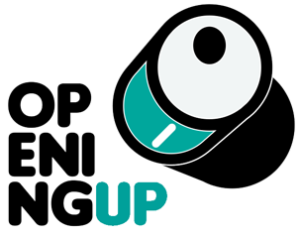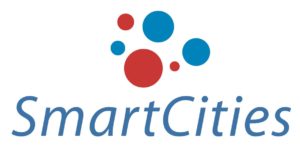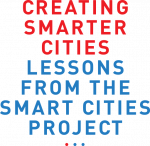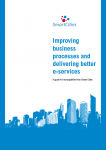In this podcast with fluido I talk about how innovation is enabled by a combination of people, processes, and technology.

BLING has just published my latest magazine – Blockchain and Government in Europe. This 84 page magazine brings together 11 interviews and 8 new blockchain use-cases to explore the state of Blockchain in Government in Europe.
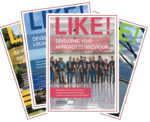
LIKE! supported the development of local ‘innovation cultures’ in cities across Europe. Our content strategy pulled together the findings and key lessons learned into a set of 4 magazines. Learn why we took this approach
With a focus on making content accessible to a wide audience, the magazines covered key themes and showcased the value of international collaborations within the project.

See a video intro to the set of magazines I wrote earlier this year that capture everything that the LIKE! project has learned about accelerating innovation and building capacity by developing ‘innovation cultures’.
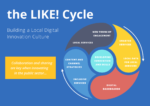
I developed the ‘LIKE Cycle’ as an iterative model for capacity development and innovation that builds upon everything we’ve learned delivering the LIKE! project. The LIKE Cycle is a both a pathway for individual and organisational skills development, and a roadmap for service innovation and development.

LIKE! has been developing new ways for cities and communities to use data – to design and deliver better services, and to make better policy decisions for communities.
The ‘Creating Digital DNA’ work in LIKE! has focused on 3 areas: 1) Digital dashboards, 2) Local data for local services, and 3) the Internet of things (IoT).

Learn how BLING (Blockchain in Government) plans to accelerate and de-risk the development and deployment of blockchain-enabled e-services in the North Sea Region of Europe.

A key risk faced by many projects is they didn’t make sure that they had enough staff to deliver what they promised.
I’ll tell you why this is such a big deal to funders and managers, and how you can change your approach to better manage this risk.

BLING – BLockchain in Government – is a €5M collaboration of 13 organisations – governments, cities and universities – who are exploring how governments can use blockchain to enable the next generation of smart services.

Key lessons in how to structure a high-risk project that keeps funders happy and give you flexibility in managing innovation programmes.

Key lessons in how to structure a high-risk project that keeps funders happy and give you flexibility in managing innovation programmes.

Like! is a €4.2M Interreg Vb project that is developing a ‘local innovation culture’ approach to address the underlying capacity issues that are hampering the improvement of e-government and e-services.

Like! aims to significantly enhance the capacity of the public sector to facilitate and deliver innovation, resulting in the development of a wide range of services using innovative solutions to deliver better public services.

Like! is a €4.2M Interreg Vb project that I set up in 2016 to stimulate innovation in the public sector, and to deliver new solutions that improved public services.

I spent three years managing the Smart Cities Academic Network, which was set up to provide support to the Smart Cities Project. This case study summarises the SCAN approach and identifies the key outcomes.

Smart Cities prioritised improving customer services, adopting user profiling in service design/deliver, and exploring the potential of wireless services.
The project used a combination of co-design, targeted academic research, and mainstreaming/public engagement approaches to deliver high-impact and high-profile results that were used to make cities smarter across Europe.
The Smart Cities Academic Network developed a systemic, accessible approach to knowledge production and dissemination that was designed to accelerate the development of e-services and e-government in Europe.

OpeningUp looked at how governments could use social media to deliver better services, and how to leverage the potential of open data to deliver better targeted and more effective services.


